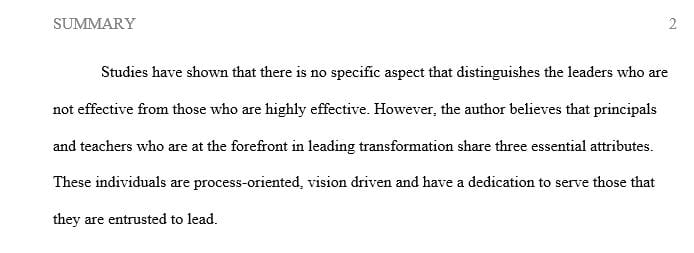Investment in professional development and mentoring of teachers and principals
One to Grow On / Shining a Light on Leadership
Carol Ann Tomlinson
Transformative teachers and principals follow three practices.
I think a lot about leadership in schools. I see teachers who lead in ways that sculpt their own lives and the lives of their students for the better—and teachers who do not. I observe principals who lead faculty to invest the very best that’s in them to ensure that young people maximize their capacities—and principals who do not. I think a lot about what it means to embody the best of leadership in a school context, and about how we might grow more leaders who are catalysts for those around them to become their best selves.
There is no broad agreement on what distinguishes highly effective leaders from those who are less effective. In fact, two authors concluded 30 years ago that thousands of studies on leadership might be summed up by saying that “never have so many labored so long to say so little” (Bennis & Nanus, 1985, p. 4). Nonetheless, I have come to believe that teachers and principals who lead in transformative ways share at least three key attributes. My sense, informed by a good bit of study and a whole lot of experience, is that teachers who consistently change young people’s lives for the better and principals who consistently change education practices for the better are vision-driven, process-oriented, and dedicated to serving those they lead.
Leading from a Vision
Principals and teachers whom I think of as exemplary leaders are on a mission—one almost certainly focused on bettering the prospects of young people. These leaders are driven by the needs they see around them and a sense of both opportunity and obligation to make a difference. Their leadership starts and sticks with “why” that vision matters (Sinek, 2009).
One of the voices on the nature of leadership that has been most clarifying to me is that of Thomas Sergiovanni (1992, 1999). Leaders, he says, operate from some platform of authority; the kind of authority on which a leader draws both reflects and shapes how he or she leads.
Some leaders claim bureaucratic authority (“I’m higher on the food chain, and those with less claim to power should do as I direct”). Some work from psychological authority (an “expect-and-reward” perspective). Some draw on technical authority (a “do-what-the-research-says” stance). Some lead from professional authority (a “training-and-experience-will-guide-the-way” approach). And finally, some leaders work from a moral authority—forming communities around shared values and norms based on mutual commitment and a sense of interdependence. Sergiovanni concludes that the primary authority for leadership in schools currently derives largely from the first three categories—but that we would be better served if the latter two categories were central.
Drawing on their professional and moral authority, the teachers who lead most powerfully say to their students, both explicitly and through consistent action, “Let’s be a place where we help one another find our individual and group strengths. Let’s learn because it’s an exciting and enriching thing to do.”
Likewise, principals who lead most powerfully say to the teachers and parents with whom they work, “Let’s work as a team to be sure every student is valued, supported, and strengthened. Let’s make learning the best gig in town.”
Minding the Process
Powerful visions require constant tending. They don’t come fully formed, but rather demand careful planning, awareness of the torrent of details that swirl around them (and too often consume them), and persistent reflection on where things are progressing and where they are not. A transformational teacher understands that words can dignify or decimate, that carefully planned routines support positive student behavior, that meaning-rich content is motivational, and that conversations with individual students can make a greater difference than any textbook ever will. Every teacher is human and errs repeatedly, but by focusing on process, teachers who transform their students’ lives hold tight to the intent to live out their vision every day in the classroom.
Likewise, transformational principals know that they are the representatives-in-chief of the vision they put forth. They plan, communicate, reflect, and recalibrate in ways that clarify, commend, and model the vision.
Servant Leadership
Teachers and principals who are, for me, the clearest representatives of leadership exemplify the statement, “Leadership is not about being in charge. It’s about taking care of the people in your charge” (Sinek, 2015). Good teachers care about and for their students, and good principals do the same for their faculty and students. Their work is about making school a more meaningful and rewarding place. It’s about respecting the individuals they lead and ensuring that the work they share is both doable and satisfying. In both contexts, these leaders want to build a community of shared values, in which individuals learn to trust and support one another in moving toward, achieving, and surpassing shared goals. Sergiovanni (1992) calls this follower-focused approach servant leadership (p. 116).
I have a compelling sense that our investment in professional development and mentoring of teachers and principals would take us to a very different and higher place if it were centered on holding to a vision, minding the process, and being servants of those we lead.
Answer preview to investment in professional development and mentoring of teachers and principals

323 words

